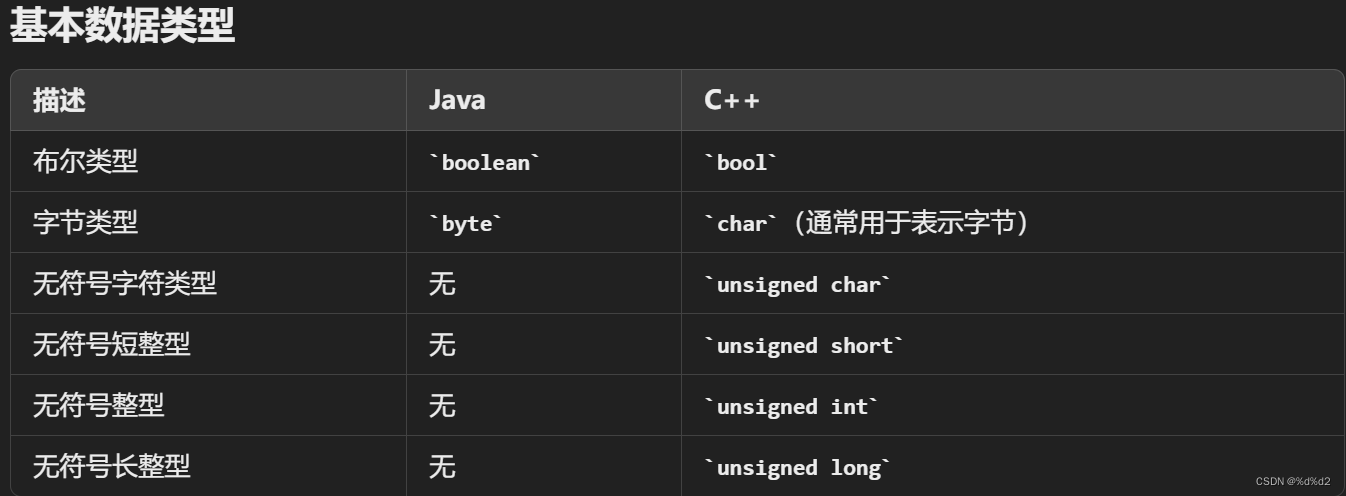本文主要是介绍基本Java语法和语义 (Reading 2),希望对大家解决编程问题提供一定的参考价值,需要的开发者们随着小编来一起学习吧!
(1)Java和C++在变量类型命名和使用
基本数据类型
对象类型与引用类型 
特殊类型
关键字和修饰符 
(2)快照图:
-
IDE调试工具:
- 许多IDE(如Eclipse、IntelliJ IDEA)提供了调试功能,可以在调试过程中查看程序的堆栈和堆的状态,帮助理解快照图。
示例代码:
public class SnapshotExample {public static void main(String[] args) {int a = 10;int b = 20;int c = a + b;String s1 = "Hello";String s2 = s1 + " World";Person p = new Person("Alice", 30);p.setAge(31);}
}class Person {String name;int age;Person(String name, int age) {this.name = name;this.age = age;}void setAge(int age) {this.age = age;}
}
快照图:
Stack (栈) Heap (堆)
+-------------------+ +------------------------+
| main() | | (String@1) "Hello" |
|-------------------| +------------------------+
| a -> 10 | | (String@2) "Hello World"|
| b -> 20 | +------------------------+
| c -> 30 | | (Person@3) |
| s1 -> (String@1) | | name -> "Alice" |
| s2 -> (String@2) | | age -> 31 |
| p -> (Person@3) | +------------------------+
+-------------------+
(3)Java集合框架(Collections Framework)
import java.util.*;public class CollectionOperations {public static void main(String[] args) {// 列表操作List<String> list = new ArrayList<>(Arrays.asList("苹果", "香蕉", "橙子"));list.remove("香蕉");list.forEach(item -> System.out.println("列表项: " + item));// 集合操作Set<String> set = new HashSet<>(Arrays.asList("猫", "狗", "鸟"));set.remove("狗");set.forEach(item -> System.out.println("集合项: " + item));// 映射操作Map<String, Integer> map = new HashMap<>();map.put("约翰", 25);map.put("简", 30);map.forEach((key, value) -> System.out.println(key + "的年龄是: " + value));}
}
这篇关于基本Java语法和语义 (Reading 2)的文章就介绍到这儿,希望我们推荐的文章对编程师们有所帮助!







